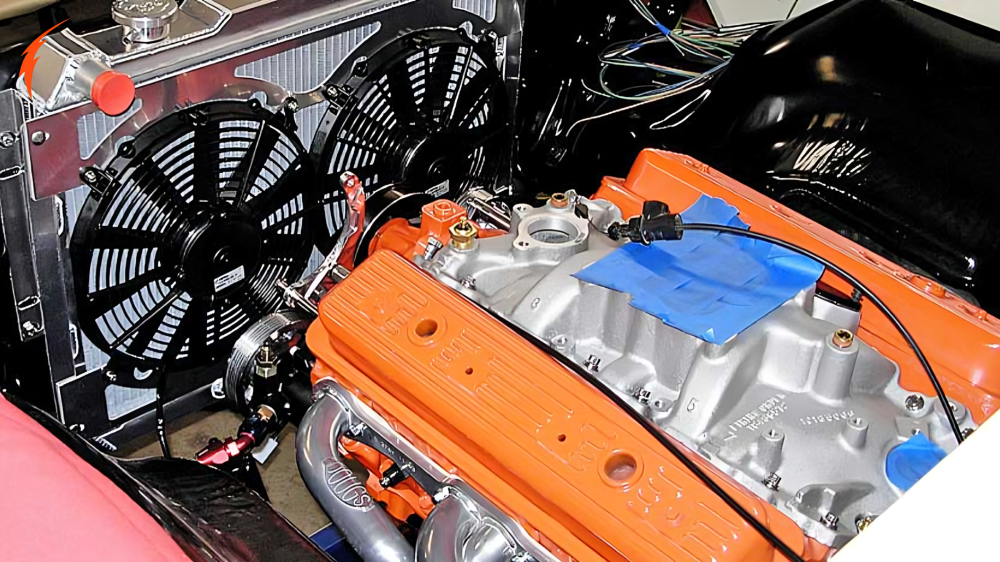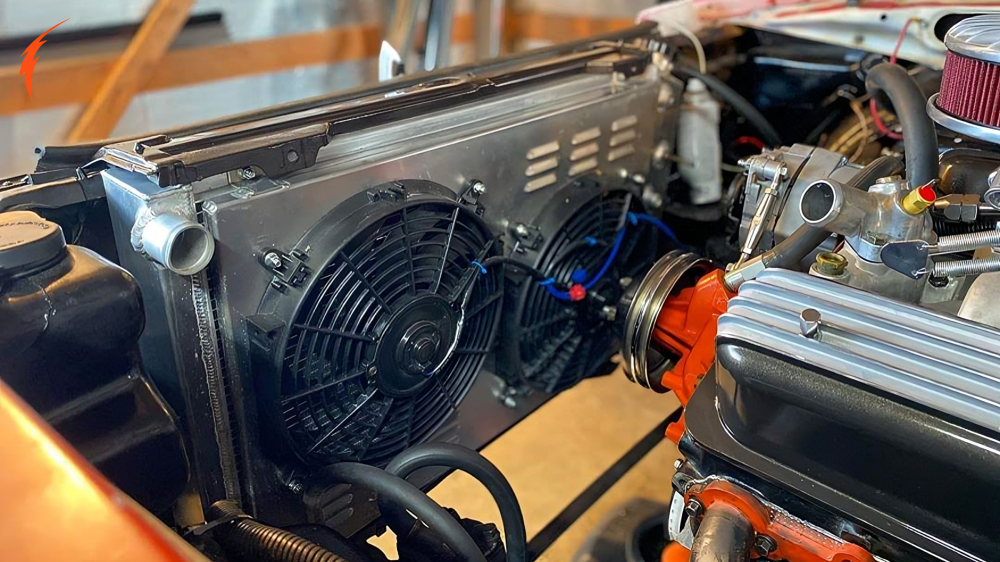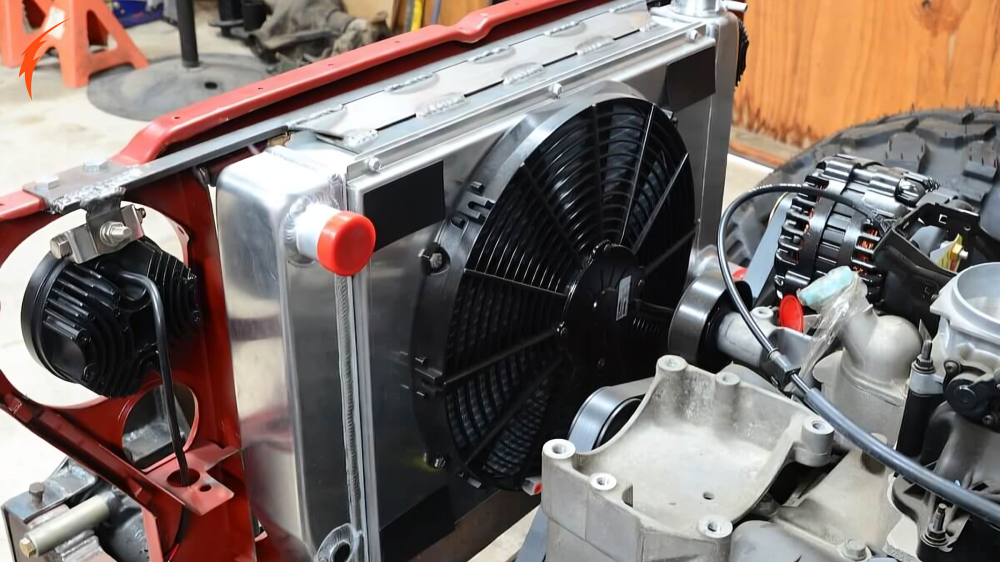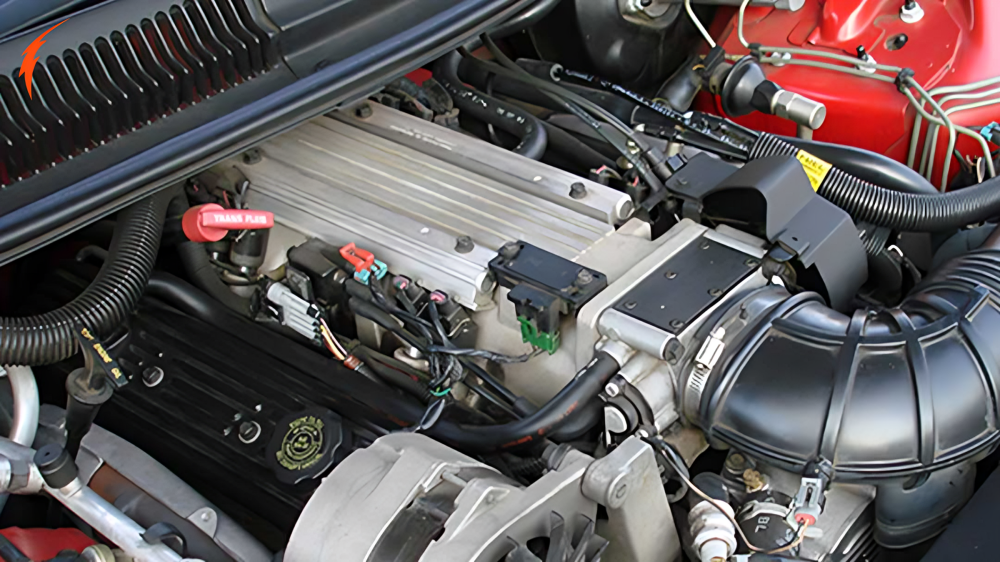When it comes to high-performance engines, such as the LT1 found in various Chevrolet models, maintaining the cooling system is of paramount importance. The 192-97 LT1 Cooling System is specifically designed to keep these powerful engines running at their optimal temperature, ensuring longevity and peak performance. Proper maintenance of the 192-97 LT1 Cooling System not only prevents overheating but also contributes to the overall health of the engine, protecting it from wear and tear.
In this comprehensive guide, we’ll delve deep into the workings of the 192-97 LT1 Cooling System, explaining its importance, components, common issues, and the essential maintenance steps to keep your LT1 engine performing at its best. Whether you’re an automotive enthusiast, a seasoned mechanic, or a proud owner of a vehicle equipped with an LT1 engine, Expertise and preserving your 192-97 LT1 Cooling System is fundamental to keeping the life of your engine.
Overview of the 192-97 LT1 Cooling System
The 192-97 LT1 Cooling System is designed to manage the temperature of the LT1 engine, which is known for its impressive performance in cars like the Chevrolet Corvette and Camaro. The LT1 engine was first introduced in the 1990s, and it quickly became known for its robust power output and reliability. However, like all high-performance engines, it generates a significant amount of heat, and keeping that heat under control is crucial to avoiding engine damage.
The 192-97 LT1 Cooling System is a complex network of components that work together to regulate the engine’s temperature. It includes a radiator, water pump, thermostat, coolant, and various hoses and fittings that ensure coolant is circulated through the engine and back into the radiator, where it is cooled before being reintroduced into the system. Each part plays a critical role in ensuring the engine remains at a safe operating temperature.
Why Proper Maintenance of the 192-97 LT1 Cooling System is Critical
Maintaining the 192-97 LT1 Cooling System is essential for several reasons. First, it prevents overheating, which can cause severe damage to the engine. Overheating can lead to warping of the cylinder heads, blown head gaskets, and even complete engine failure. The cost of repairing or replacing a damaged engine far outweighs the relatively simple task of maintaining the cooling system.
Additionally, a well-maintained 192-97 LT1 Cooling System contributes to the overall efficiency of the engine. When the engine operates at the correct temperature, it runs more smoothly and efficiently, reducing fuel consumption and emissions. This is particularly important for those who use their LT1-powered vehicles for daily driving or racing, where performance and efficiency are top priorities.
Lastly, regular maintenance of the 192-97 LT1 Cooling System extends the life of the engine. By ensuring that the engine is always operating within the optimal temperature range, you reduce the wear and tear on engine components, allowing the engine to last longer and perform better over time.

Key Components of the 192-97 LT1 Cooling System
Understanding the key components of the 192-97 LT1 Cooling System is crucial for proper maintenance. Each part of the system works together to regulate the engine’s temperature, and failure in any one component can lead to serious problems. Let’s take a closer look at the essential components of the 192-97 LT1 Cooling System.
Radiator
The radiator is one of the most important components of the 192-97 LT1 Cooling System. Its primary function is to dissipate heat from the coolant before it re-enters the engine. The radiator consists of a series of tubes and fins that allow air to pass through and cool the heated coolant. Over time, the radiator can become clogged with debris, reducing its efficiency and potentially causing the engine to overheat.
Water Pump
The water pump is responsible for circulating the coolant throughout the 192-97 LT1 Cooling System. It pumps the coolant from the radiator, through the engine, and back into the radiator. If the water pump fails, the coolant will not circulate properly, leading to overheating and potential engine damage. Regular inspection and replacement of the water pumps are essential to maintaining the health of the 192-97 LT1 Cooling System.
Thermostat
The thermostat controls the flow of coolant through the engine based on temperature. When the engine is cold, the thermostat remains closed, stopping coolant from flowing through the radiator. This allows the engine to warm up quick. Once the engine reaches the optimal operating temperature, the thermostat opens, allowing the coolant to flow and regulate the engine’s temperature. A malfunctioning thermostat can cause the engine to overheat or run too cold, both of which can negatively affect performance and longevity.
Coolant
Coolant, also known as antifreeze, is the liquid that circulates through the 192-97 LT1 Cooling System, absorbing heat from the engine and transferring it to the radiator. The coolant is a mixture of water and antifreeze, which prevents freezing in cold temperatures and boiling at high temperatures. Over time, coolant can damage or end up being infected, reducing its effectiveness. Regular coolant flushes are necessary to maintain the efficiency of the 192-97 LT1 Cooling System.
Hoses and Fittings
The hoses and fittings of the 192-97 LT1 Cooling System are responsible for transporting coolant throughout the system. These hoses are made of durable rubber, but they can become brittle and cracked over time, leading to leaks and loss of coolant. Regular inspection and replacement of worn hoses are crucial to preventing leaks and maintaining the integrity of the 192-97 LT1 Cooling System.

Typical Problems with the LT1 Cooling System 192-97
Even with regular maintenance, the 192-97 LT1 Cooling System can develop issues over time. Being aware of the most common problems can help you catch and address them before they lead to more serious engine damage.
Overheating
One of the most common issues with the 192-97 LT1 Cooling System is overheating. This can be caused by a variety of factors, including a malfunctioning water pump, a clogged radiator, or a faulty thermostat. Overheating can cause serious damage to the engine, so it’s important to address any signs of overheating immediately. Common symptoms include a rising temperature gauge, steam coming from under the hood, or the engine warning light turning on.
Coolant Leaks
Coolant leaks are another common issue with the 192-97 LT1 Cooling System. Leaks can occur in the hoses, radiator, or water pump, leading to a loss of coolant and reduced cooling efficiency. Low coolant levels can cause the engine to overheat, so it’s important to regularly check for leaks and top off the coolant as needed.
Clogged Radiator
Over time, the radiator in the 192-97 LT1 Cooling System can become clogged with dirt, debris, and corrosion. A clogged radiator reduces the system’s ability to dissipate heat, leading to overheating. Regular cleaning and flushing of the radiator are necessary to prevent clogs and maintain the efficiency of the cooling system.
Faulty Thermostat
A faulty thermostat can cause the 192-97 LT1 Cooling System to either overcool or overheat the engine. If the thermostat is stuck open, the engine may not reach its optimal operating temperature, leading to poor performance and increased fuel consumption. If the thermostat is stuck closed, the engine can overheat, causing serious damage. Replacing a faulty thermostat is a simple and cost-effective way to prevent these issues.
Water Pump Failure
The water pump is a critical component of the 192-97 LT1 Cooling System, and its failure can lead to a complete breakdown of the system. A failing water pump can cause the coolant to stop circulating, leading to overheating and potential engine damage. Signs of a failing water pump include coolant leaks, a whining noise from the engine, or overheating. Regular inspection and replacement of the water pump can prevent these issues.

Essential Maintenance Tips for the 192-97 LT1 Cooling System
To ensure the longevity and performance of your LT1 engine, regular maintenance of the 192-97 LT1 Cooling System is essential. Here are some key maintenance tips to keep your cooling system in top condition:
Regular Coolant Flushes
Coolant can degrade and get polluted with particles over time, which lowers its efficacy. Regular coolant flushes are necessary to remove the old coolant and replace it with a fresh, clean coolant. It’s recommended to flush the 192-97 LT1 Cooling System every 30,000 to 50,000 miles, depending on the type of coolant used and the driving conditions.
Inspect and Replace Hoses
The hoses in the 192-97 LT1 Cooling System are subject to wear and tear over time. Regularly inspect the hoses for signs of cracking, brittleness, or leaks, and replace them as needed. Worn hoses can lead to coolant leaks, which can cause the engine to overheat.
Check the Radiator for Clogs
The radiator plays a crucial role in the 192-97 LT1 Cooling System, and it’s important to keep it free of clogs and debris. Regularly inspect the radiator for signs of dirt, leaves, or other debris that could reduce its cooling efficiency. If necessary, flush the radiator to remove any buildup and restore its performance.
Monitor Coolant Levels
Low coolant levels can cause engine damage and overheating.Regularly check the coolant level in the 192-97 LT1 Cooling System and top off as needed. If you notice a sudden drop in coolant levels, inspect the system for leaks and address any issues immediately.
Replace the Thermostat
A faulty thermostat can cause a variety of problems in the 192-97 LT1 Cooling System, from overheating to poor engine performance. If you suspect that the thermostat is malfunctioning, replace it with a new one to ensure the cooling system is functioning properly.
More: Reddit
Conclusion
The 192-97 LT1 Cooling System is a vital component of the LT1 engine, and proper maintenance is essential to keeping the engine running smoothly and efficiently. By regularly inspecting and maintaining the cooling system, you can prevent common issues like overheating, coolant leaks, and radiator clogs, ensuring the longevity and performance of your engine.
Whether you’re a casual driver or a performance enthusiast, taking the time to care about your 192-97 LT1 Cooling System will pay off in the long run, allowing you to enjoy the power and reliability of your LT1 engine for years to come.
FAQ: 192-97 LT1 Cooling System
- What is the 192-97 LT1 Cooling System?
- The 192-97 LT1 Cooling System is a specialized cooling system designed to manage the temperature of the LT1 engine found in various Chevrolet vehicles. It includes components like the radiator, water pump, thermostat, hoses, and coolant to prevent overheating and maintain optimal engine performance.
- Why is the 192-97 LT1 Cooling System important?
- The system is critical for regulating the engine’s temperature, preventing overheating, and ensuring efficient engine performance. A properly functioning cooling system extends the life of the engine and reduces the risk of serious damage such as blown head gaskets or warped cylinder heads.
- What are the key components of the 192-97 LT1 Cooling System?
- The essential components include the radiator, water pump, thermostat, coolant, and hoses. Each part works together to circulate the coolant and maintain the engine’s temperature within a safe range.
- How often should I maintain the 192-97 LT1 Cooling System?
- It’s recommended to inspect and maintain the 192-97 LT1 Cooling System every 30,000 to 50,000 miles. This includes flushing the coolant, checking for leaks, inspecting hoses, and replacing the thermostat and water pump if necessary.
- What are the signs of a failing 192-97 LT1 Cooling System?
- Common signs include overheating, coolant leaks, low coolant levels, and a rising temperature gauge. Whining noises from the engine or steam under the hood can also indicate issues with the cooling system.



